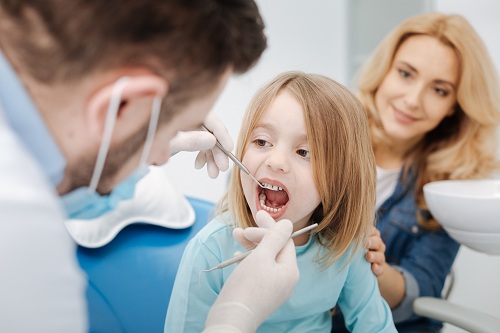We're supporting our patient with resources to stay safe and informed.

Pediatric Dentistry
Here are some definitions of key dental terms to help you become more familiar with dentistry and the services we provide at our offices:

General evaluation
-
It is the general evaluation of a pediatric patient in relation to his/her dental and skeletal health.
Cleanings
-
It is the preliminary removal of plaque and debris and other build up on the clinical crowns.
Fluoride applications
-
It is the topical application of fluorides after tooth cleaning to facilitate avoidance of any further decay on teeth.
Sealants
-
Sealants protect the grooved and pitted surfaces of the teeth, especially the chewing surfaces of back teeth where most cavities in children are found. Made of clear or shaded plastic, sealants are applied to the teeth to help keep them cavity-free.
Brushing
-
It is the mechanical removal of plaque, debris and other deposits on a child’s teeth with the help of toothbrush and paste.
Flossing
-
It is either a bundle of thin nylon filaments or a plastic (Teflon or polyethylene) ribbon used to remove food and dental plaque from teeth. The floss is gently inserted between the teeth and scraped along the teeth sides, especially close to the gums. Dental floss may be flavored or unflavored, and waxed or unwaxed. An alternative tool to achieve the same effect is the interdental brush.
Extractions
-
It is the removal of a tooth from its supporting bone structure under local/general anesthesia
Space Maintenance
-
It is the maintenance of space with the help of fixed intra oral appliances after the premature natural/surgical removal of a baby tooth until the permanent teeth erupts in its place.
Oral habits
-
Oral habits behaviors include, among others, digit sucking, pacifier sucking, lip sucking and biting, nail biting, bruxism, self-injurious habits, mouth breathing, and tongue thrust. Nonnutritive sucking behaviors (eg, finger or pacifier sucking) are considered normal in infants and young children and usually are associated with their need to satisfy the urge for contact and security.
Caries
-
Also known as tooth decay or a cavity, is a disease where bacterial processes damage hard tooth structure (enamel, dentin and cementum)
Crowns
-
A dental crown is a tooth-shaped "cap" that is placed over a tooth - covering the tooth to restore its shape and size, strength, and/or to improve its appearance.


